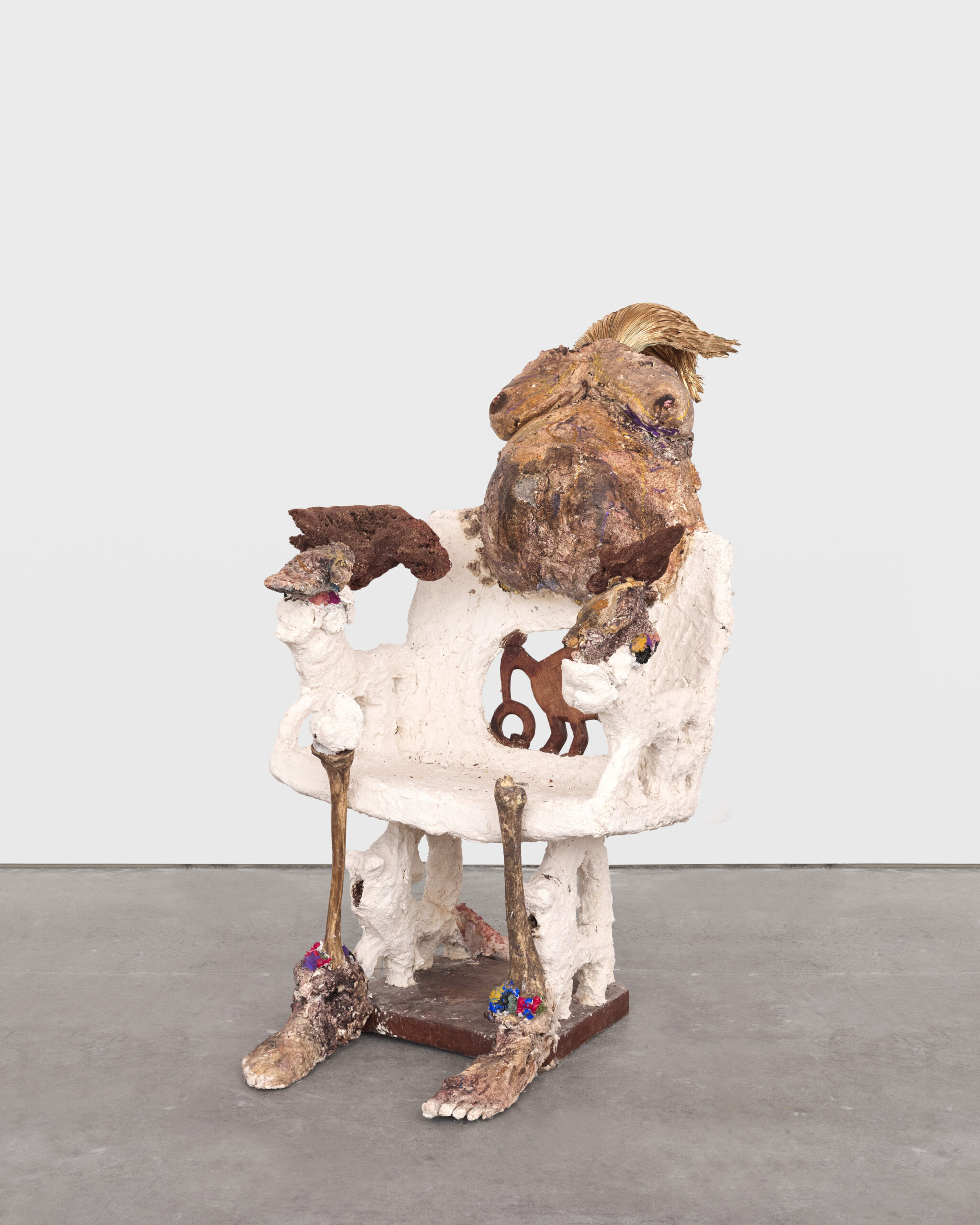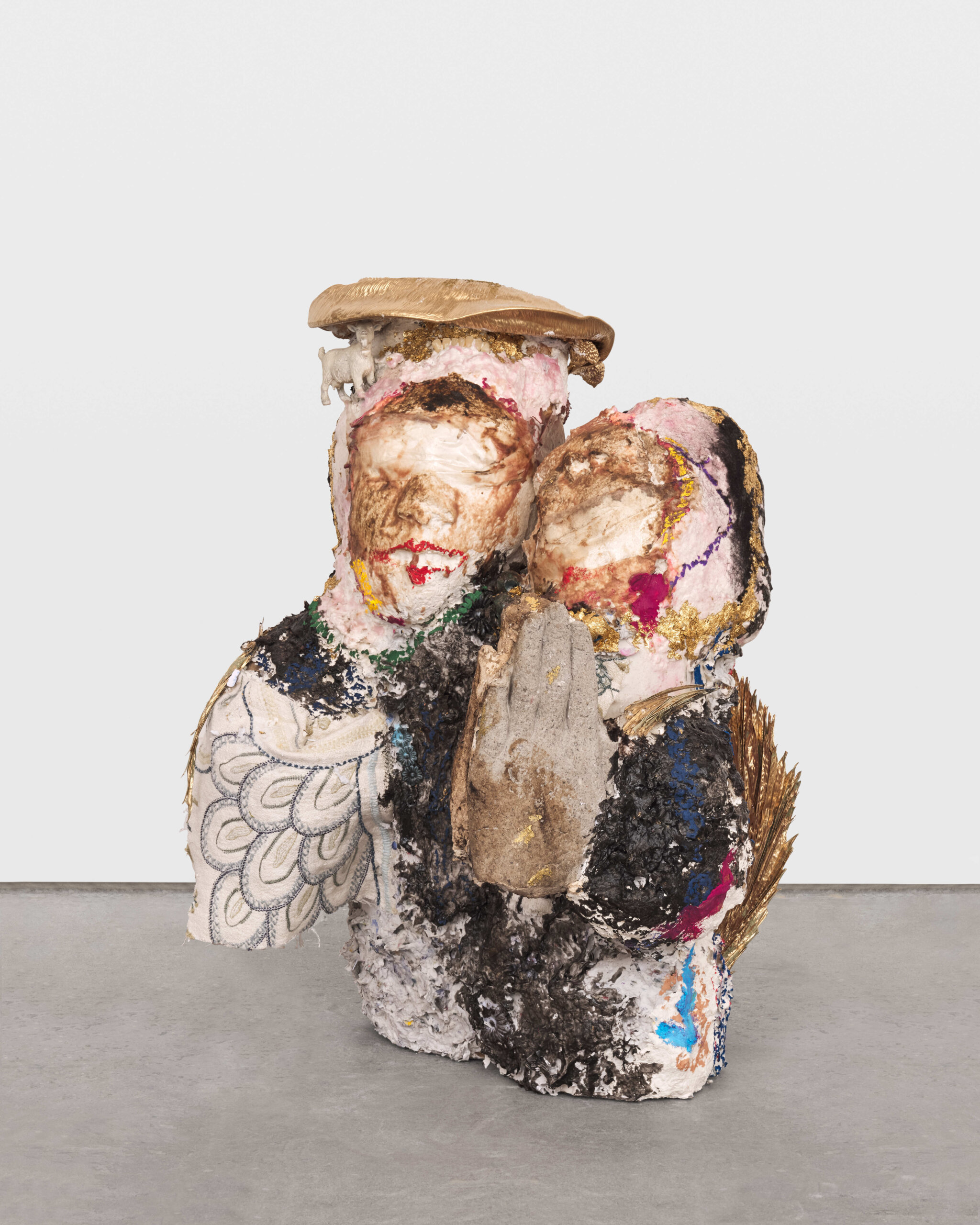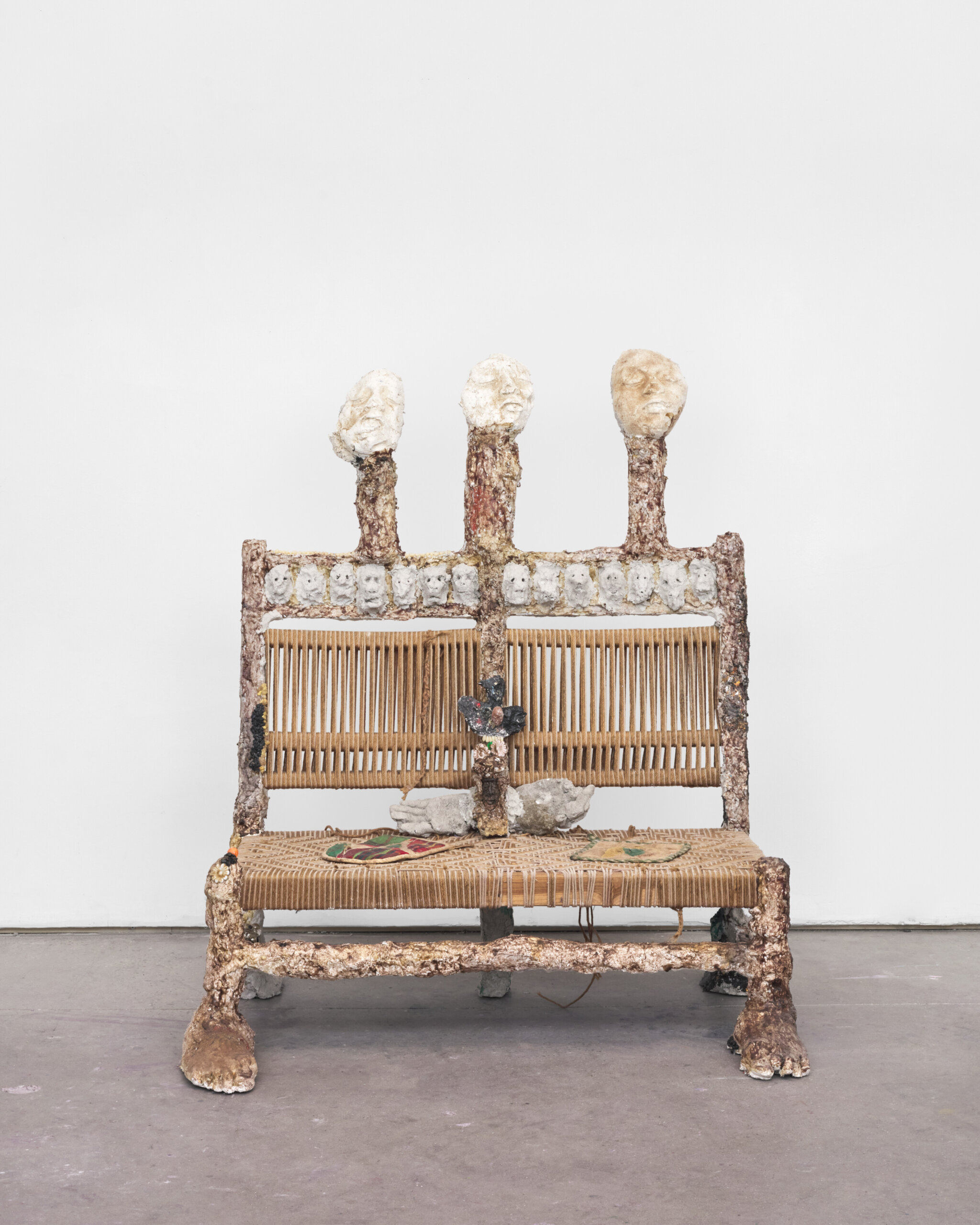
Nickola Pottinger greeted me at the door of her Brooklyn studio holding a baby—her daughter, Zora. She found out about the pregnancy shortly after landing her first solo museum exhibition, “fos born,” which is on view through Jan. 11 at the Aldrich Contemporary Art Museum. The pregnancy “ended up having a deep influence and was a source of major inspiration for the show,” said the museum’s chief curator Amy Smith-Stewart.
Pottinger shares her studio with her husband, fellow artist Zahar Vaks—her work is on one side; his is on the other. During my visit, she explained that Zora is more drawn to Vaks’s color-infused paintings than the sculptures she had been prepping for the show (mostly at night, when her daughter was sleeping). Within a minute or two of looking around, I noticed one work prominently featuring a cast of her pregnant torso. It turns out that Vaks had to pry the silicone mold for the work (Give tanks and praises, 2025) off Pottinger’s body moments before she went into labor.
Smith-Stewart was introduced to the artist’s work at the 2021 New Museum Triennial, where she presented a wall relief (her primary format at the time) made from experiments sculpting with paper pulp. By the time the Aldrich show came around, Pottinger’s work looked quite different: she had moved squarely into three dimensions. “What I first saw, which looked like shards of pottery or fresco, evolved into something that was more figurative, and you could see that she started to tap into this Jamaican folklore that she had heard as a child,” Smith-Stewart noted.

The ties that bind generations are a key part of Pottinger’s work. To make Aunty and grandad, 2025, a bust commemorating her aunt and grandfather, Pottinger affixed replicas of hair clips she wore as a child, disguising them so well that they’re barely legible as part of the rough, sketchily painted surface. She also arranged hair beads in the shape of a beard for the suited figure and dressed the other in fabric featuring a leaf pattern often seen in Jamaica.
“I love that there are these types of secrets in this work,” said Smith-Stewart, who thinks the technique places the artist within a cohort that “share a secret language with her communities, which I think is beautiful, and important, too, because those typically are stories that are still missing.”
In all her works, Pottinger combines remnants from her childhood with symbols, stories, and spirits relating to her ancestry and culture. In Aunty and grandad, 2025, a small goat figurine sits under the brim of her grandfather’s hat. The toy animal references Pottinger’s summertime visits to Jamaica, where goats walked freely on the beach. But the animal tail made from gold leaf is what confers a mythical quality, making the piece much more than a run-of-the-mill portrait bust.

Growing up, Pottinger’s family talked a lot about spirits, which are traditionally called “duppies” (the word for “ghosts” in Jamaican patois) and often characterized them as evil. From time to time, the artist would even see or feel the presence of some of them herself—like one night at her grandmother’s house, in the form of a red-eyed mouse.
Within Jamaican culture, these figures straddle the physical and spiritual realms, looking for new spaces to inhabit; Pottinger considers her work as a sort of bridge. But she reintroduces these ancestral figures as our guardians or protectors, reconstituted to help preserve her family’s cultural heritage. “The purpose of the work initially is to build and protect legacy—not just my own personal history, but of the history of where I come from and a culture that extends beyond country,” Pottinger once said in an interview. Somehow, this repurposing lends her work a lived-in quality, rather than an ominous one.
Not long ago, Pottinger primarily made drawings, layering pastels and inks over paper. “I come out of a strong drawing practice and a lot of collage,” Pottinger says. “But I think I’m still using the same principles from drawing in this format.” While the pieces in this show first read like a departure, viewers can look closely to see that Pottinger sculpted them using paper, like that wall relief at the Triennial. She grinds it into a pulp with the help of a hand mixer—a kitchen staple in her family for making Jamaican black cakes. And it’s not just any paper, but paper she collected from her family home. This material carries “an energy,” she says, that can be transmitted through her work.

In one of the more imposing works in the show, Memba when wi did young, 2023, 14 masks line the back of a bench—Pottinger’s version of an ancestral throne. She made them from a mold of her face, using the porous, unwieldy nature of paper as a medium to her benefit, with each new face not at all looking like a clone of the last. Three busts rest high on posts, and a bird sits squarely at the center of the bench. The artist added it to symbolize the idea of going on a journey from the past to the present: spirits, history, and culture moving seamlessly between realms.










 in your life?
in your life?

